The Seven Pyramids of Egypt: Marvels of Ancient Civilization
When most people think of Egypt, their minds instantly travel to the image of the great pyramids rising out of the desert sands. These incredible monuments are not only iconic symbols of ancient Egyptian civilization but also masterpieces of engineering and endurance. Of Egypt’s 100+ pyramids, seven stand out for their historical and architectural significance.
In this article, we explore the seven most famous pyramids of Egypt, each a chapter in the story of a civilization that continues to amaze us thousands of years later.
1. The Great Pyramid of Giza (Pyramid of Khufu)
The Great Pyramid of Giza, also known as the Pyramid of Khufu or Cheops, is the largest and best-known of all the Egyptian pyramids. Builders constructed it between 2580 and 2560 BCE. Though it once stood at 146.6 meters (481 feet), the loss of casing stones has reduced its height to 138.8 meters (455 feet).
The accuracy of the Great Pyramid is what makes it so interesting. The builders positioned the sides almost exactly in line with the cardinal points of the compass. It was the world’s tallest man-made edifice for millennia. The pyramid houses the Grand Gallery, King’s Chamber, and Queen’s Chamber—all magnificent examples of ancient architecture. The mystery of how it was constructed without modern tools continues to baffle historians and engineers.
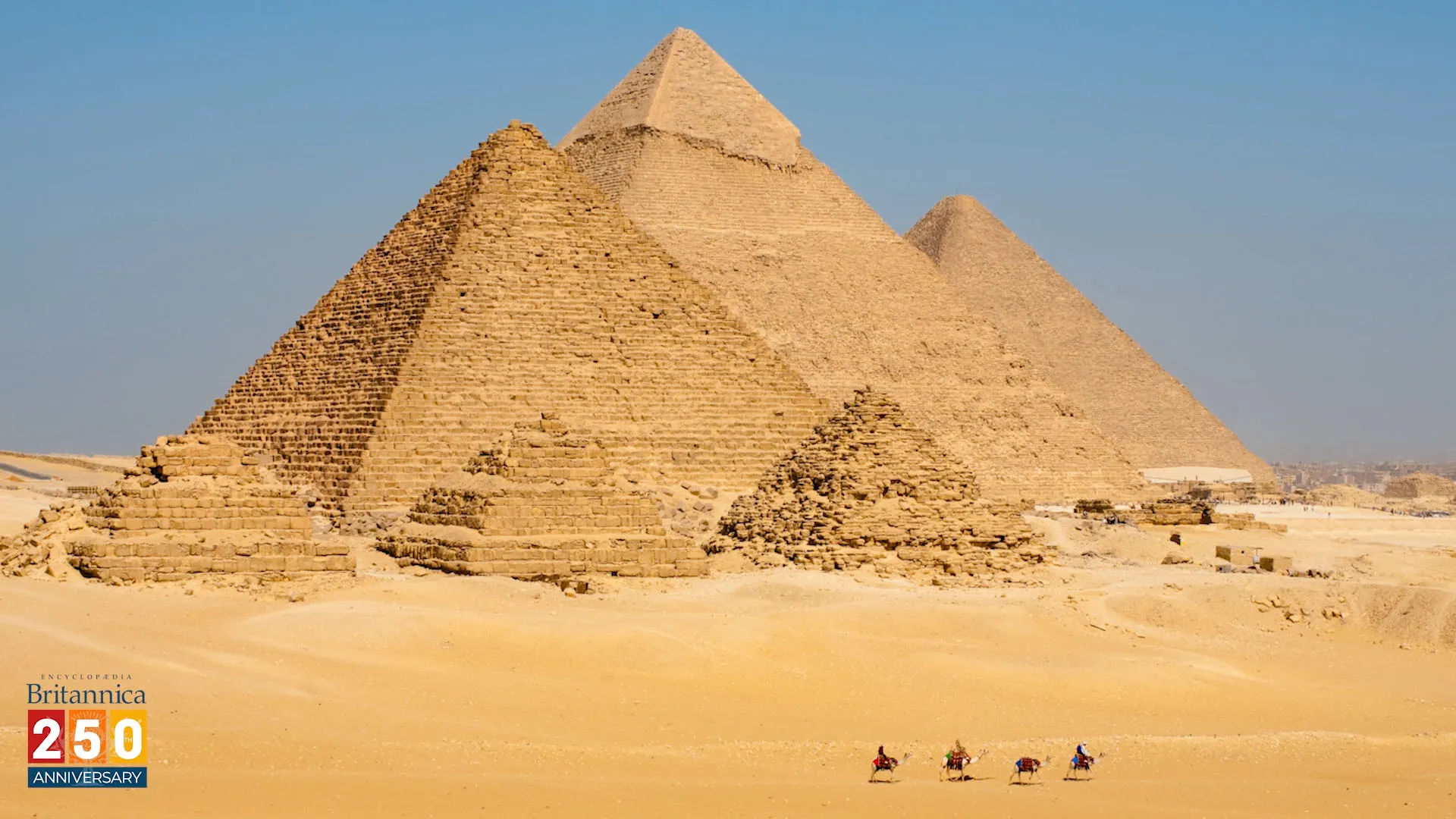
2. Pyramid of Khafre
Built around 2570 BCE by Khafre, this pyramid is smaller than his father’s but appears taller due to its higher elevation and steeper angle. It still has parts of the original casing stones, giving an idea of how smooth and shiny the pyramids used to be. Next to it stands the Great Sphinx of Giza, which is said to have Khafre’s face on it. The Khafre pyramid complex includes a causeway, valley temple, and mortuary temple, showcasing ancient Egyptian funeral architecture.
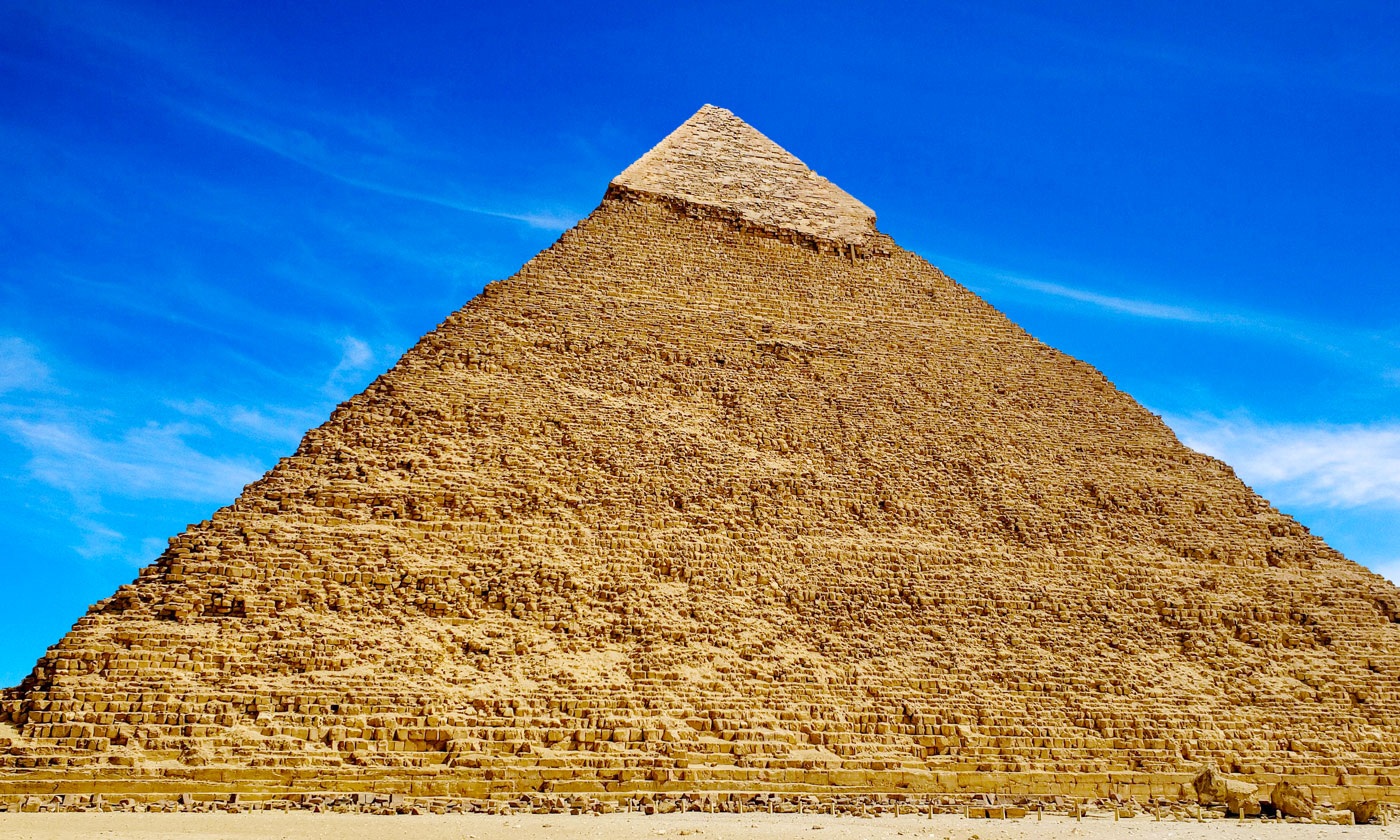
3. Pyramid of Menkaure
Pharaoh Menkaure, Khafre’s successor, built the third pyramid on the Giza Plateau. Though smaller, standing at about 65 meters (213 feet), it is remarkable for its complex internal structure and the lavish materials used. The builders constructed parts of the pyramid and its associated temples with granite — a symbol of strength and eternity.
Archaeological evidence suggests that Menkaure’s pyramid complex was not completed until after his death. Despite its modest size, the Pyramid of Menkaure stands as a testament to the skill and religious devotion of ancient Egyptian builders.
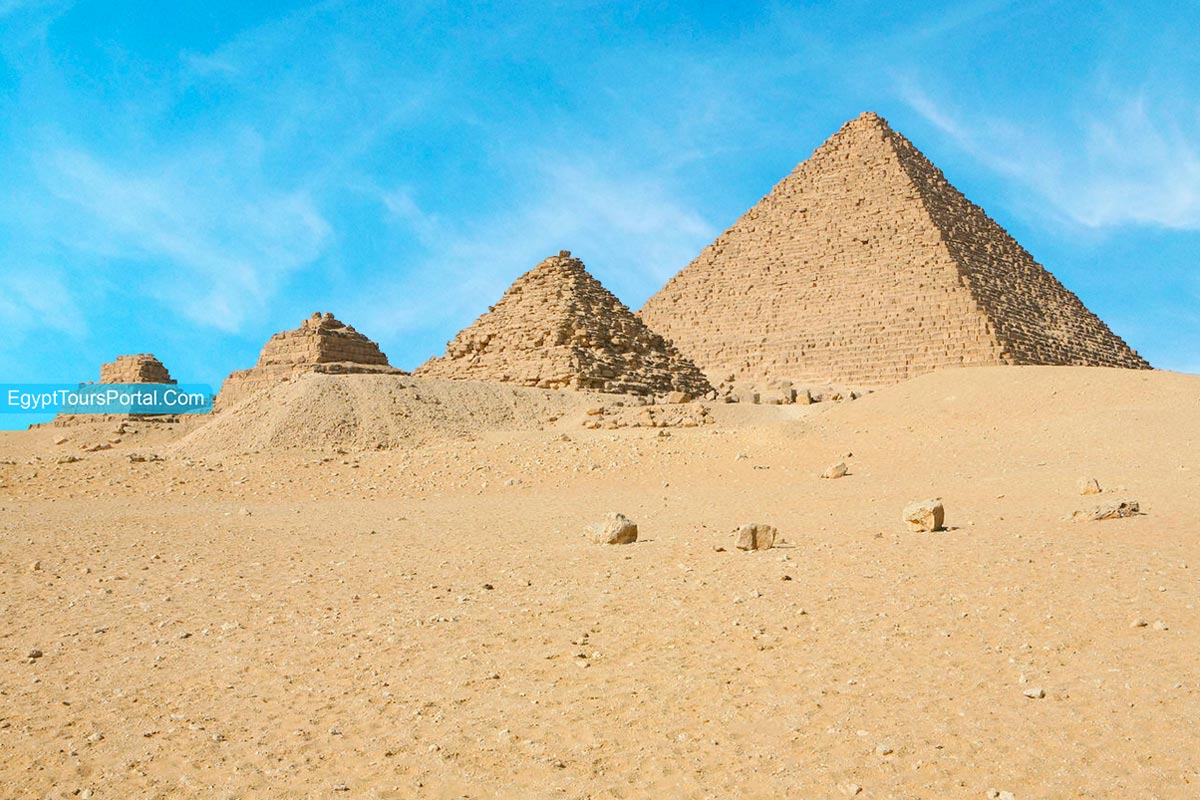
4. Step Pyramid of Djoser: pyramids
The Step Pyramid of Djoser in Saqqara is Egypt’s earliest colossal stone building and the first successful pyramid. Built for Pharaoh Djoser in the 27th century BCE by architect Imhotep, the pyramid originally stood 62 meters (203 feet) tall.
Unlike the smooth-sided pyramids of Giza, the Step Pyramid consists of six stacked mastabas, creating a distinctive stepped look. This architectural innovation marked a pivotal moment in Egyptian funerary practices and paved the way for future pyramid designs.
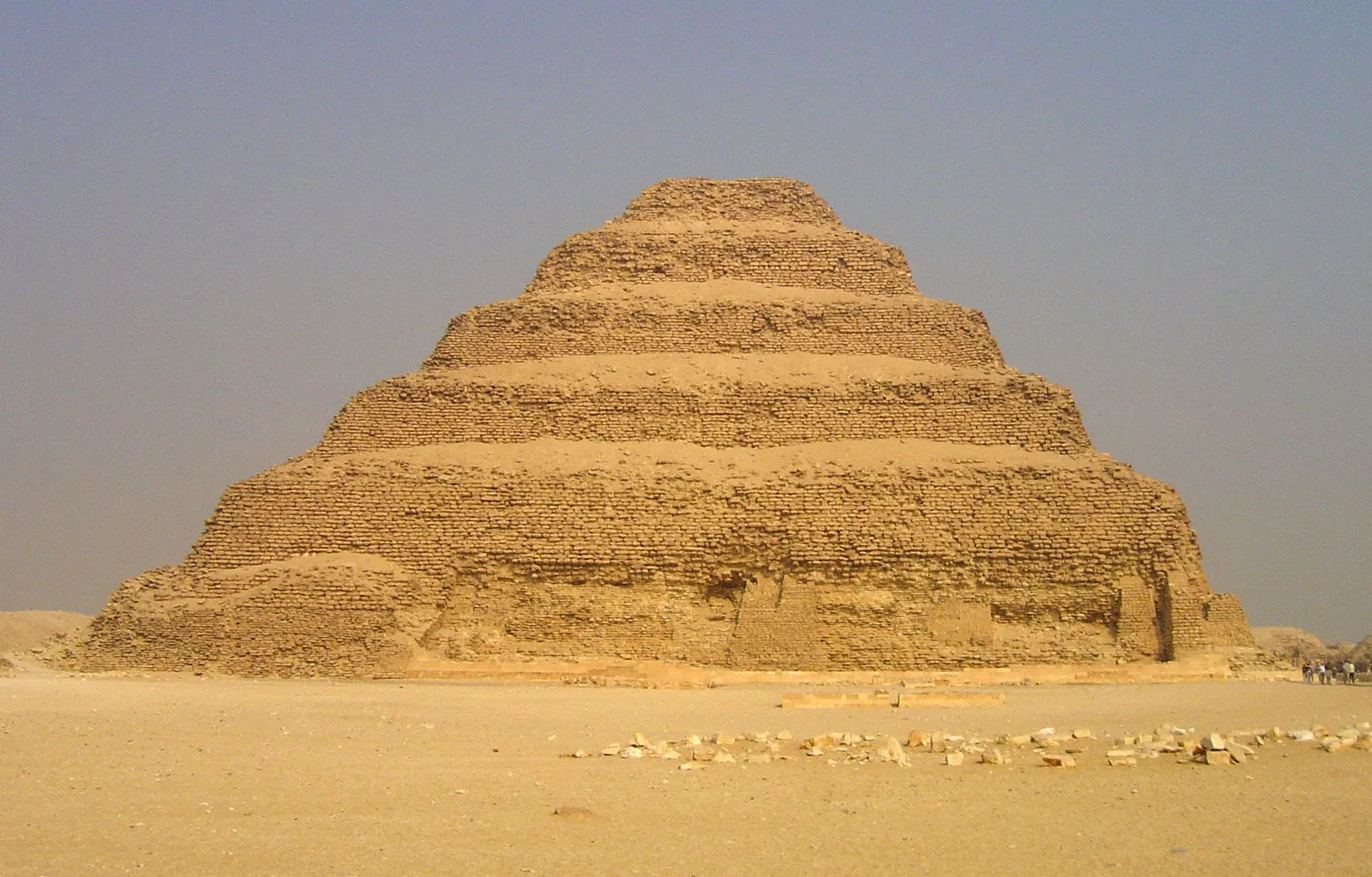
5. Bent Pyramid of Sneferu
Pharaoh Sneferu, the founder of the Fourth Dynasty, was an ambitious builder who experimented with pyramid design. The Bent Pyramid, located in Dahshur, reflects this experimentation. Constructed around 2600 BCE, the pyramid’s lower part rises at a steep angle of 54 degrees but suddenly shifts to a shallower angle of 43 degrees halfway up.
Scholars believe the builders changed the design to avoid structural failure as cracks began to appear. Despite its “flawed” design, the Bent Pyramid remains one of the best-preserved pyramids, with much of its original limestone casing still intact.
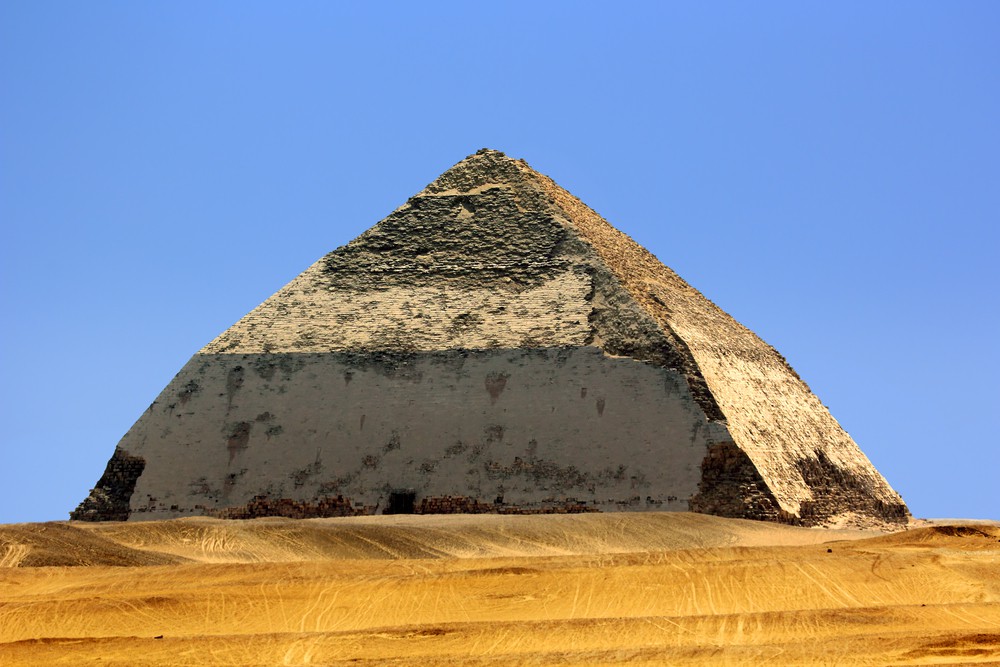
6. Red Pyramid of Sneferu
Sneferu put the Red Pyramid in Dahshur into service after the Bent Pyramid’s difficulties. Historians consider it the first successful “true” smooth-sided pyramid, completed around 2590 BCE.
Standing at about 104 meters (341 feet), it gets its name from the reddish hue of its exposed limestone. Because of its accomplishments, the Great Pyramid of Giza was built. Visitors today can even venture inside the Red Pyramid, experiencing the eerie quiet of its vast chambers.
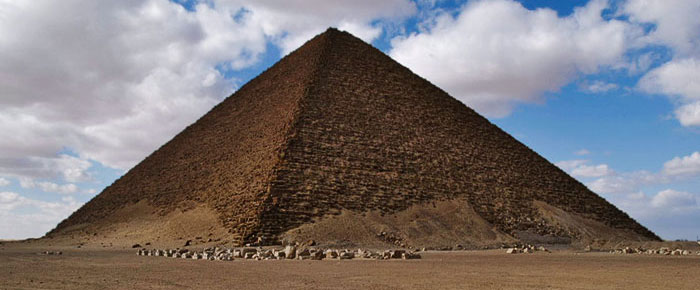
7. Pyramid of Unas: pyramids
The Pyramid of Unas, built during the Fifth Dynasty around 2375–2345 BCE, is located in Saqqara near the Step Pyramid. Though smaller and simpler, it holds great importance for containing the world’s oldest religious texts — the Pyramid Texts.
The pharaoh was supposed to be protected and guided in the afterlife by these writings on the walls of the burial chamber. The Pyramid of Unas marks a shift in Egyptian funerary practices toward more spiritual and textual approaches to immortality.
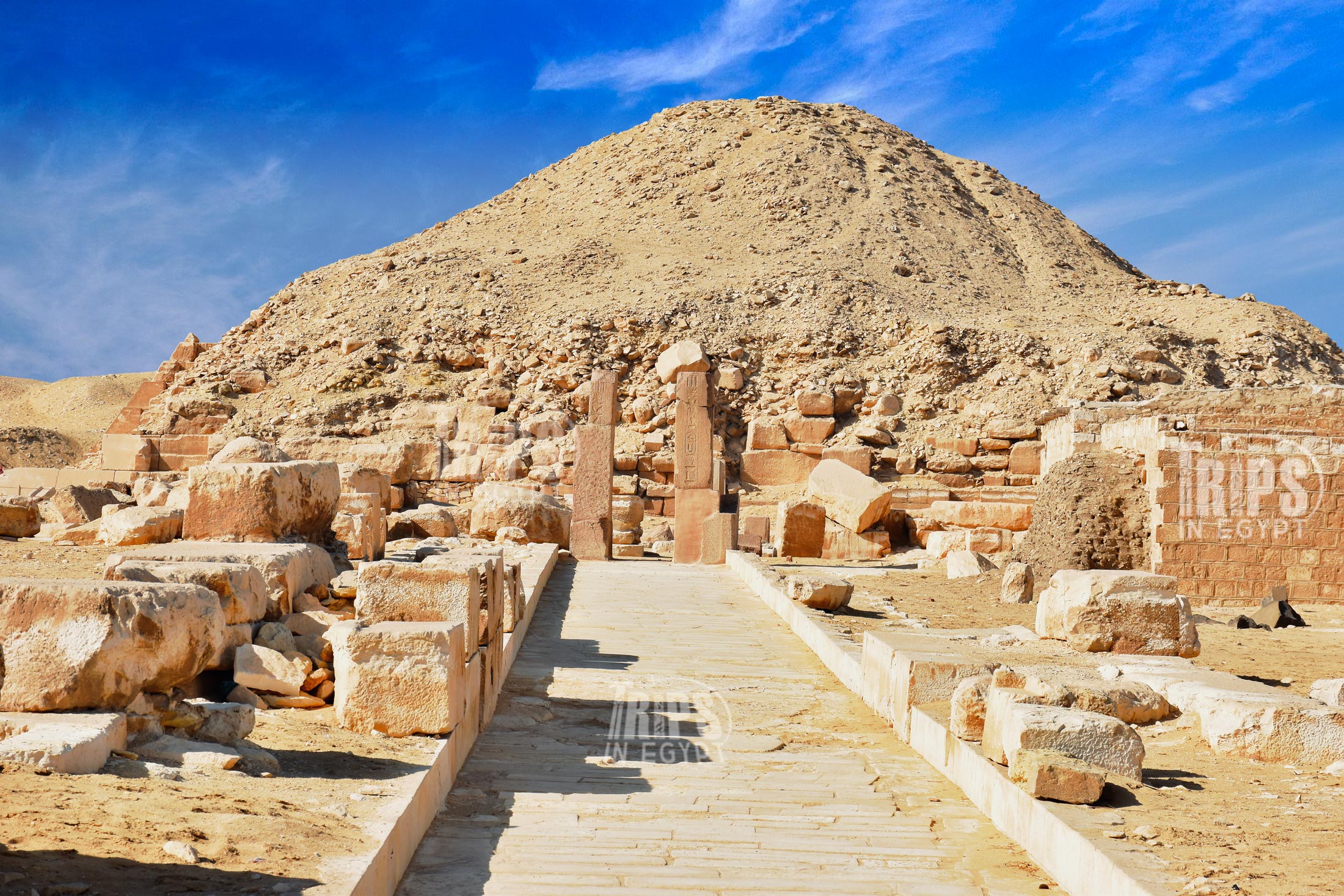
Conclusion
Egypt’s seven pyramids show how ancient architecture, religion, and regal aspirations changed over time. Today, they stand as both royal tombs and testaments to one of the world’s greatest civilizations.
Visiting these pyramids, whether in person or through the pages of history, is to walk in the footsteps of a culture that looked to the heavens and built monuments to eternity.










